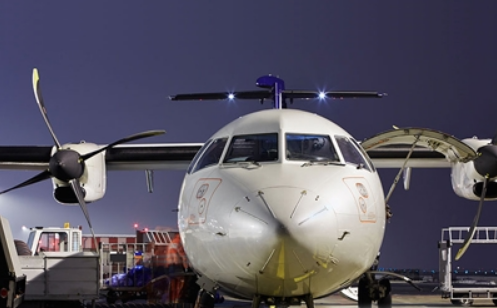Application of RFID tags in aeronautical component tracking
Traceability and visibility of information and assets is important for many production processes, especially in the aviation industry. If any part of the aircraft fails to pass the corresponding audit, the aircraft must not take off. So in the field of aviation, it is common that millions of airplanes can’t fly normally because of a 10 yuan part. No aircraft operator can bear the serious consequences caused by ignoring the use and maintenance information of parts, and is unwilling to bear the flight delay caused by the investigation due to improper use of parts. It can be said that the airline industry has no extra money to buy expensive assets and hire specialized staff to prevent flight delays.

Flight safety issues and industry status promote the development of RFID in the aviation industry, and also bring business opportunities to us – not only airlines, including any organization in the aircraft manufacturing industry chain. “We firmly believe that using RFID to improve information tracking of aircraft parts will benefit not only Airbus, but the entire aviation value chain,” said a recent RFID journal article on promoting the use of RFID technology by Airbus.
The following three points are the summary of RFID to improve aviation production processes, asset maintenance, and inventory management:
1. The flying parts have special requirements for the use of RFID tags. Ultra High Frequency (UHF) is the only technology that can be used for flying parts (other technologies may be used in other processes in the aerospace industry). RFID tags need to comply with many industry standards including EPCglobal C1G2, SAE AS5678, ATA Spec2000, and others. Three independent data formats and storage requirements are specified in the ATA Spec2000 standard. It’s important to understand this because there is a common misunderstanding in the industry: large parts are required for flying parts.
2. There is no absolute “authority” label in the aviation field. There may be some brand names that are louder, but they are by no means the only choice. More importantly, whether the label meets industry standards, sufficient user memory, and whether the label is stable and durable can provide accurate identification of the entire life cycle of the asset.
3. The value of RFID has been proven in the industry value chain. From the past Boeing to today’s Airbus, two international giant aircraft manufacturers have advocated and implemented RFID applications for aircraft parts, but the beneficiaries are not limited to themselves. Portugal’s MRO supplier TAP announced that through its RFID technology, the company’s labor and inventory management costs in recent years have reached more than $2.5 million. Our RFID solutions for aircraft manufacturers, component suppliers, and maintenance service providers, including Airbus, Bell Helicopter, Parker, and Kver Collins. Company (Rockwell Collins), Portuguese Airline Service Provider (TAP), etc.
Aircraft can’t use ordinary fuel, they must use aviation fuel to fly; the aviation industry’s information system must also be specially designed to ensure high performance. Ordinary and traditional data acquisition systems (bulletin boards, manual entry, bar codes) are inefficient and inaccurate; ordinary labels cannot withstand the pressure and temperature of the aviation industry. With years of development in the aerospace industry, we already has a range of RFID tags that meet industry requirements. We are committed to working with partners to provide better service in the aerospace sector.
If you want to know more information about RFID technology or RFID system, please contact us at: info@rfid-global.com.cn, thanks!

